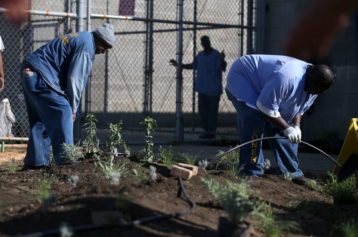Throughout the country, the court system is rigged against poor people and communities of color, and Bronx County in New York City is a most extreme and poignant example of a nationwide crisis.
Although there is a constitutionally guaranteed right to a speedy trial, in practice that guarantee does not extend to those without means, particularly the Black and Latino folks who live in places such as the Bronx — the poorest and Blackest county in New York. These are the people who are arrested and charged with frivolous misdemeanor offenses under a “broken windows” philosophy of policing. And when faced with an under-resourced and broken-down court system, they may wait years for a jury trial — their lives disrupted, their psyche damaged, and often they are compelled to take a plea.
On Wednesday, the Bronx Defenders — a legal advocacy group providing civil and criminal legal services to the indigent — filed a federal class-action lawsuit against New York Governor Andrew Cuomo; Janet DiFiore, Chief Judge of the State of New York and Chief Judicial Officer of the Unified Court System; and Lawrence Marks, Chief Administrative Judge of the Unified Court System. The suit, Trowbridge v. Cuomo, filed on behalf of thousands of Bronx residents, claims the state courts are failing to give people their due process and their day in court, making justice an illusion.
The day the lawsuit was filed, Atlanta Black Star spoke with Robin Steinberg, the Executive Director of the Bronx Defenders, on what prompted her organization to take action.
“About three years ago we collaborated with The New York Times on a series on delay in the Bronx … and we hoped that that would bring about some systemic change,” Steinberg said. “What we began to see was not only was there no structural change, the delay problem was getting worse. And in fact, it has gotten worse since The Times did the investigative piece three years ago,” she added. Ultimately, the time had come to do what we need to do, the courts need to come in,” Steinberg said, with the goal to “compel immediate political will” to change the state of the courts in the Bronx.
For the head of the Bronx Defenders, it says a lot that lawyers have to sue the governor and the courts on behalf of their clients because the system is failing.
“It says the clients we represent and the community we represent is one of the most marginalized and overlooked communities in New York City, as is the case across the country. They have very little political power, no access to political power and have been under-utilized and marginalized. This does not happen in the tony community in Manhattan,” Steinberg insists.
The statistics gathered by the plaintiffs paint a picture of a serious epidemic of disparities. As of January 2016, there were 2,378 misdemeanor cases pending for over 365 days in the Bronx, and 538 cases pending for over two years. Last year, although there were 45,000 misdemeanor arraignments, there were a mere 98 misdemeanor trials. And for those select few who get a trial, they must wait 642 days on average for a non-jury bench trial, and 827 days for a trial by jury, which is 99 percent higher than in Manhattan, 66 percent higher than in Brooklyn and 48 percent higher than in Queens.
Meanwhile, under New York’s speedy trial statute, prosecutors are required to be ready for trial within 90 days of arraignment for class A misdemeanors (such as assault, theft and drug possession), 60 days for class B misdemeanors (such as harassment, marijuana possession and stalking), and 30 days for non-criminal violations.
“You have to wait 99 percent longer in the Bronx. You wait longer in the Bronx than any other borough…It speaks to how we resource certain communities and under-resource others,” Steinberg noted. “This has been a known secret for years, and we hope to compel some change.”
Moreover, there are human faces behind these numbers, with a heavy toll taken in terms of lost jobs, frayed relationships and damaged well-being. This is the tax levied on the poor and on people of color. For example, John Carridice suffered through 1,009 days and 20 court dates before he had a trial and was acquitted. Sarah Bello endured 1,166 days and 33 court dates before her charges were thrown out. Joseph Bermudez was also acquitted, but only after 1,258 days and 38 court dates. On at least 16 occasions, both parties were ready for trial, but no court rooms were available.
Michael Torres, 43, had to appear in court 14 times for misdemeanor marijuana possession, typically waiting up to six hours at a time. As a result of numerous absences from work, he was fired. Although his case was dismissed after 877 days because the arresting officer could not recollect the incident, for this father of two, the damage had been done.
“After waiting all that time, I wasn’t even able to have my day in court,” said Torres. “I did everything I was supposed to do, but the system failed me – I joined this case because I want to ensure this doesn’t happen to others.”
One of the devastating effects of the epidemic of court delays is that people are forced to enter into plea agreements to make the case go away. According to The New York Times, 97 percent of federal cases and 94 percent of state cases end in plea bargains. The implications are that the courts are not used for the adjudication of cases and deciding who is guilty or innocent, but for deal making. Rather, the courts become what the American Bar Association, the National Legal Aid and Defender Association and others refer to as a “McJustice” system — one which operates based on the assembly line principles of a fast-food restaurant. For the indigent it means there is a premium placed on expediency over high-quality treatment.
“The truth is that what happens when you have this kind of delay is people end up with an unconscionable choice to come back in to court every month for 833 days — which is a form of punishment — or plead guilty. There is no way to end this punishment unless you plead guilty,” Steinberg said. “Clients continually miss work, miss childcare, miss appointments. It is the system’s best way to extract a guilty plea.”
The Bronx Defender chief shared that when public defenders advocate to their client to stick it out longer and wait, their clients — faced with the torture of court delays — have a right to take the plea, and often do.
Although this lawsuit is about the Bronx courts, and by extension the state of New York, this is a case with national implications. There are other jurisdictions like the Bronx. For example, in downstate Illinois, which does not include the Chicago area, 56 percent of pending misdemeanor cases were over a year old as of 2014, according to the Bronx Defenders. In North Carolina, 16.5 percent of all pending misdemeanor cases were over a year old, while 7.7 percent were older than 731 days, according to the state’s 2014-2015 Judicial Report. Moreover, even in a state with a better track record such as Wisconsin, 19 percent of misdemeanor cases are pending more than 180 days, with 95 percent of the cases taking 360 days before resolution. The state guidelines say that only 5 percent should be pending for that long.
“People need to keep their eyes on this because it is a national problem,” Steinberg emphasized. “People need to pay attention and defenders need to pay attention because our clients’ lives are deeply impacted,” and their humanity is not being acknowledged, she argued.
It is no accident that the Bronx is the poorest borough of New York City and the poorest county in New York state. Further, the South Bronx is the poorest congressional district in the entire nation, according to the U.S. Census, with 38 percent of people living below the poverty line, including 49 percent of children. Bronx also has the highest proportion of people of color of any county in the state, with a population that is 43 percent Black and 55 percent Latino, with whites accounting for 10 percent of the county, according to the most recent Census figures. Not surprisingly, 95 percent of Bronx misdemeanor arraignments involve people of color, the highest percentage in the city.
Meanwhile, those poor and Black people who are subjected to a dysfunctional and unresponsive court system are the ones facing the massive and frivolous arrests, heavy-handed monitoring and racial profiling by the police. In recent years, the New York City Police Department has come under fire for a stop-and-frisk policy that has ensnared hundreds of thousands of city residents, typically Black and Latino young men. As a lawsuit filed against the NYPD by the Center for Constitutional Rights revealed, 85 percent of those targeted by these “suspicionless and racially pretextual stop and frisks” are Black and Latino, who make up 52 percent of the city’s population. According to the New York Civil Liberties Union, more than 4 million New Yorkers have been subjected to police stops and interrogations since 2002, with nine of 10 people being completely innocent.
Ultimately, Steinberg believes this is an issue that will resonate among the public, even among those who are far removed from the court system.
“People will be shocked by this. It is something that is relatable — even if you aren’t touched by the criminal justice system and live in an affluent white community — because it is such a basic issue of a right to a trial,” she said.
“If I have to go to the department of motor vehicles for one day I am outraged,” Steinberg offered. “Imagine if you have to go every day for three-and-a-half years. You see this playing out as people struggle to keep their heads above water. They’re living with the economic and psychological toll of this hanging on their heads.”



